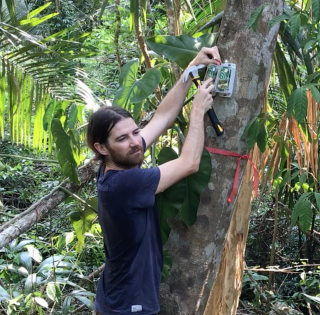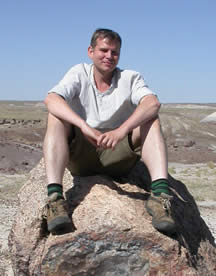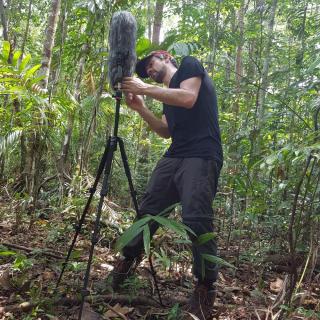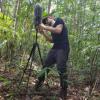Acoustic sensors enable efficient and non-invasive monitoring of a wide range of species, including many that are difficult to monitor in other ways. Although they were initially limited in application scope largely due to cost and hardware constraints, the development of low-cost, open-source models like the Audiomoth in recent years has increased access immensely and opened up new avenues of research. For example, some teams are using them to identify illicit human activities through the detection of associated sounds, like gunshots, vehicles, or chainsaws (e.g. OpenEars).
With this relatively novel dimension of wildlife monitoring rapidly advancing in both marine and terrestrial systems, it is crucial that we identify and share information about the utility and constraints of these sensors to inform efforts. A recent study identified advancements in hardware and machine learning applications, as well as early development of acoustic biodiversity indicators, as factors facilitating progress in the field. In terms of limitations, the authors highlight insufficient reference sound libraries, a lack of open-source audio processing tools, and a need for standardization of survey and analysis protocols. They also stress the importance of collaboration in moving forward, which is precisely what this group will aim to facilitate.
If you're new to acoustic monitoring and want to get up to speed on the basics, check out these beginner's resources and conversations from across the WILDLABS platform:
Three Resources for Beginners:
- Listening to Nature: The Emerging Field of Bioacoustics, Adam Welz
- Ecoacoustics and Biodiversity Monitoring, RSEC Journal
- Monitoring Ecosystems through Sound: The Present and Future of Passive Acoustics, Ella Browning and Rory Gibb
Three Forum Threads for Beginners:
- AudioMoth user guide | Tessa Rhinehart
- Audiomoth and Natterjack Monitoring (UK) | Stuart Newson
- Help with analysing bat recordings from Audiomoth | Carlos Abrahams
Three Tutorials for Beginners:
- "How do I perform automated recordings of bird assemblages?" | Carlos Abrahams, Tech Tutors
- "How do I scale up acoustic surveys with Audiomoths and automated processing?" | Tessa Rhinehart, Tech Tutors
- Acoustic Monitoring | David Watson, Ruby Lee, Andy Hill, and Dimitri Ponirakis, Virtual Meetups
Want to know more about acoustic monitoring and learn from experts in the WILDLABS community? Jump into the discussion in our Acoustic Monitoring group!
Header image: Carly Batist
- @ldbraunholtz
- | she/her
(Tropical) forest ecologist w interest: biodiversity, camera traps, community led conservation & more. Passionate about inclusive nature for all.
- 0 Resources
- 0 Discussions
- 10 Groups
- @Riley
- | she/they
I'm a Data Scientist at Western EcoSystems Technology. I am interested in AI processing and statistical modeling of acoustic data and camera trap and drone imagery.
- 2 Resources
- 2 Discussions
- 5 Groups
- @jscanass
- | he/him
University College London (UCL) & Red Ecoacústica Colombiana
PhD Student at UCL
- 0 Resources
- 1 Discussions
- 8 Groups
- @Gathoni
- | Her/she
PhD Candidate at Nottingham Trent University, UK. Ecologist with a passion for wildlife conservation and conservation technology with foundational training in BSc and MSc Rangeland Management (Ecology option). Current project: Use of acoustics to monitor ecosystem restoration.

- 5 Resources
- 8 Discussions
- 8 Groups
Develops acoustics for cetacean and bat monitoring: F-POD, C-POD, BatBug
- 0 Resources
- 2 Discussions
- 3 Groups
Open Acoustic Devices

- 0 Resources
- 4 Discussions
- 2 Groups
- @AlexBats
- | she/her
- 0 Resources
- 0 Discussions
- 6 Groups
- @nicktechs
- | he/him
creative technologist
- 0 Resources
- 0 Discussions
- 2 Groups
Wildlife Protection Solutions (WPS)
Director of Technology at Wildlife Protection Solutions. Primarily focuses on leveraging machine learning and advanced data analytics to combat poaching, monitor biodiversity, and predict environmental threats.
- 0 Resources
- 1 Discussions
- 5 Groups
Arribada Initiative
Director at Arribada, a UK-based conservation technology research & development organisation



- 2 Resources
- 98 Discussions
- 12 Groups
- @Sasi
- | he/his
I am a researcher working on non-human primates in southern India
- 0 Resources
- 0 Discussions
- 2 Groups
- 0 Resources
- 0 Discussions
- 4 Groups
This latest chapter in the Conservation Technology Series from WWF-UK looks at the opportunities, challenges and state-of-the-art of satellite remote sensing for conservation applications. This issue reviews available...
23 April 2018
Hundreds of people joined our #Tech4Wildlife photo challenge this year, showcasing all the incredible ways tech is being used to support wildlife conservation. We've seen proximity loggers on Tasmanian Devils in...
3 March 2018
Our panel of international experts has been hard at work reviewing the 47 proposals we recieved for innovative technological tools to address human wildlife conflict. The panelists have systematically been assessing the...
20 October 2017
The inherent complexity of not only deploying technologies in the field but also doing so in a scientifically rigorous manner can prove a substantial barrier for the effective use of conservation technologies, and clear...
11 October 2017
Its been a busy couple of months for the Open Acoustic Devices team. They've just returned back from Belize where they have been trialling the new AudioMoth design for gunshot detection. Find out what they've been up to...
27 June 2017
Are you ready for this year's #Tech4Wildlife Photo Challenge? In anticipation, we're counting down our ten favourite entries from last year. Do you think you can top these?
1 March 2017
The Conservation Leadership Programme (CLP) is a training and capacity building programme that targets individuals from developing countries who are early in their conservation career and demonstrate leadership...
21 November 2016
Do you work on conserving Neotropical migratory birds? Do you need funding? Why not apply for a grant from the U.S. Fish and Wildlife Service through the Neotropical Migratory Bird Conservation Act's grant program? The...
8 November 2016
Caves don't tend to be well-liked ecosystems, being extremely dark, often quite cramped, and slippery. And the creepy-crawlies that live within them can be the stuff of nightmares. Nevertheless, one's attitude towards...
25 July 2016
More than half of all primate species are endangered, including our closest living relative, the chimpanzee. Could Passive Acoustic Monitoring (PAM) be applied to primates as well as it has been for other taxa? In this...
29 June 2016
Since 2013, volunteer citizen scientists taking part in the Norfolk Bat Survey have generated over 1.2 million bat recordings, making this one of the most extensive high-quality datasets for bats collected by citizen...
5 February 2016
New horizon scanning report published this month identifies 15 emerging threats and opportunities for global biodiversity.
3 February 2016
June 2025
July 2025
September 2025
event
October 2025
November 2025
event
December 2023
event
November 2023
event
61 Products
| Description | Activity | Replies | Groups | Updated |
|---|---|---|---|---|
| The BTO Acoustic Pipeline, to support the sound identification of bats, and other species groups that are recorded as ‘by-catch... |
|
Acoustics | 4 years 3 months ago | |
| Awesome tools are out there for bioacoustic monitoring - so jazzed about the growing acoustic community! Here's another... |
|
Acoustics | 4 years 3 months ago | |
| Hi all thanks for the answers! Carly - thanks, will have to try yours. I did the course at the Organisation of Tropical Studies with Marcelo, which was awesome, but this is not... |
|
Acoustics | 4 years 4 months ago | |
| Tom Dally at Leeds University UK is doing work in this area. I dont think he has anything published yet but his preliminary results are interesting (saw them at a workshop).... |
|
Acoustics | 4 years 4 months ago | |
| Hi @pmnguyen1224 , thanks for reaching out and checking out the system! We would love to help ensure that you're able to get pattern matching to work for... |
|
Acoustics, AI for Conservation | 4 years 4 months ago | |
| I’ll stick some thoughts here that other folk can maybe comment on/add to. So there are a few (obvious) differences between terrestrial and marine... |
|
Acoustics | 4 years 5 months ago | |
| Hi Steph! It could be either - if there was anyone out there for whom this work would be a good fit for their current role, then that would be easy, but if they needed... |
|
Acoustics | 4 years 7 months ago | |
| Hi cosmicspittle, Many thanks for the pointer, I shall discusss it with our local tech disussion group here tomorrow morning. One of the guy's, the PhD candidate... |
|
Acoustics | 4 years 7 months ago | |
| Hi Wildlabbers, We've got a fascinating paper to show you, as shared with us by Claude Miaud. This study looks at how amphibian... |
|
Acoustics | 4 years 8 months ago | |
| I thought this article might be interesting to people in this group: "It’s common knowledge that bats navigate and search for... |
|
Acoustics | 4 years 8 months ago | |
| Hello to you all, I hope everyone is doing ok during this Covid-19 contingency. Jsut sharing this adaptation for the water proof case for the Audio Moth. https://www.... |
+2
|
Acoustics | 4 years 9 months ago | |
| Johnnie, Great. You can get me at work on c.abrahams@bakerconsultants.co.uk Ta, Carlos |
|
Acoustics | 4 years 10 months ago |





































